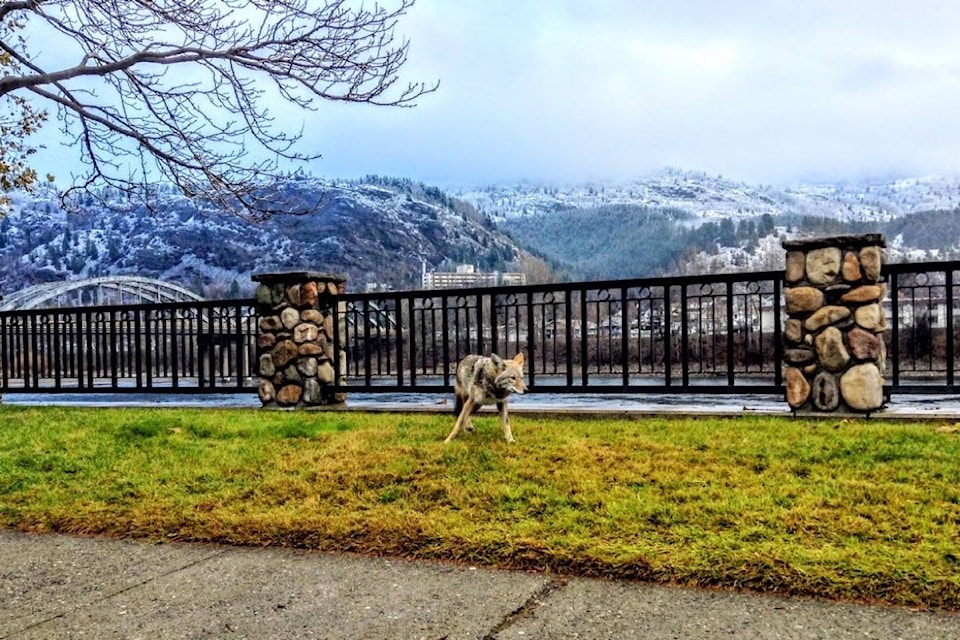After months of reported sightings, Trail RCMP did track down and kill the coyote that frequented neighbourhoods throughout the city.
Local Conservation Officer Logan Proulx confirmed the canine was shot by police at the end of January.
Sadly, when wildlife is habituated to the point of no fear, there is no other option than to destroy the animal.
“Wildlife is unpredictable as it is,” Proulx said. “But when they are habituated like that (coyote), they are definitely more unpredictable and not safe to have around. Especially when they are comfortable around humans, that is not a good thing.”
Coyotes typically mate early in the year, with pups born around mid-May. As the mothers begin emerging in search of food this spring, the best way to avoid more habituated-then-destroyed animals, is to manage household attractants.
“The coyote was accessing garbage and getting food from unnatural places, that being humans,” said Proulx. “So we need to control our attractants, like with the bears, it’s a similar thing.”
With a deeper snow pack than usual for the West Kootenay, wildlife will soon start wandering to lower elevations and valley bottoms looking for sustenance.
“Because of the snowpack, natural food sources that are in their general area, are going to take a little more time to produce,” Proulx advised. “Essentially, controlling attractants is important.”
He says the conservation service has ways to deal with noncompliance under the Wildlife Act and the office does want to hear of any potential human-wildlife conflicts.
Proulx encourages locals call the RAPP hotline at 1.877.952.7277 or #7277 from TELUS mobility to report human-wildlife interactions where public safety may be at-risk. RAPP (Report All Poachers and Polluters) is a provincial toll free service available 24/7.
Another resource is WildsafeBC’s “WARP” (Wildlfe Alert Reporting Program), which is an online resource that keeps track of wildlife sightings throughout the province.
The Trail Times asked B.C. coordinator Frank Ritcey about ways to prevent human-coyote conflicts in general.
“The thing with coyotes is that they do very well in urban settings,” he replied. “They quickly learn how to cohabitate with people and in keeping coyotes away, a big thing is to manage your cats. Don’t let them out at night and keep small dogs close.”
He says coyotes are interesting in that they typically don’t forage garbage for food scraps, rather, they are sniffing for vermin.
“If you are managing to reduce the number of rodents, like taking down bird feeders that feed rats and mice, then keep in mind, that coyotes come in to feed on those same rats and mice.”
As with conservation, Ritcey’s key message is “do not feed the wildlife.”
“The issue with coyotes (becoming habituated) is because somebody has been feeding it,” he said.
“When you get a coyote boldly walking up to a person, quite often, it’s been fed beforehand and is now looking for another handout.
“So it’s really important to stress that people should not feed wildlife because they we don’t want to have all the issues that come along with it,” Ritcey concluded.
“For the most part, coyotes can co-exist in an urban setting and they do provide a service in keeping the rodent population down. The reason they lose fear is from being fed on purpose.”
